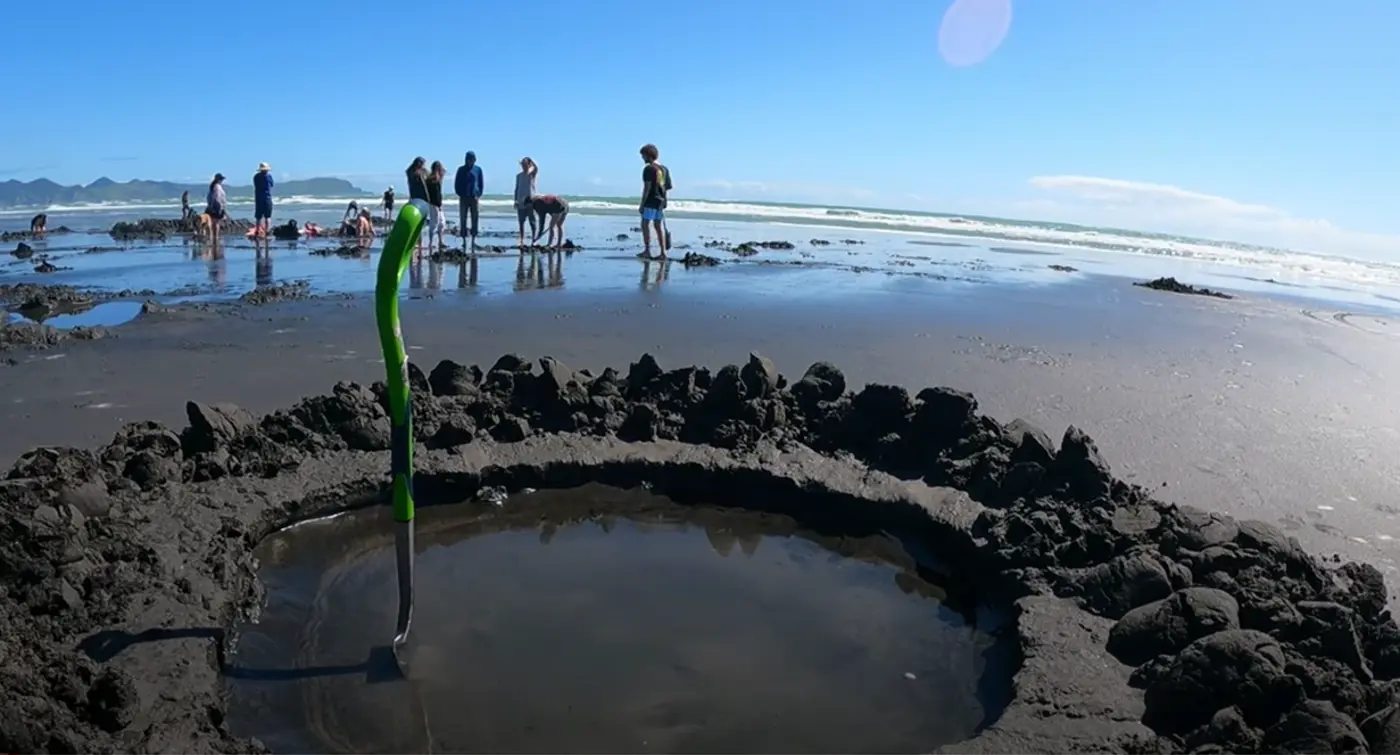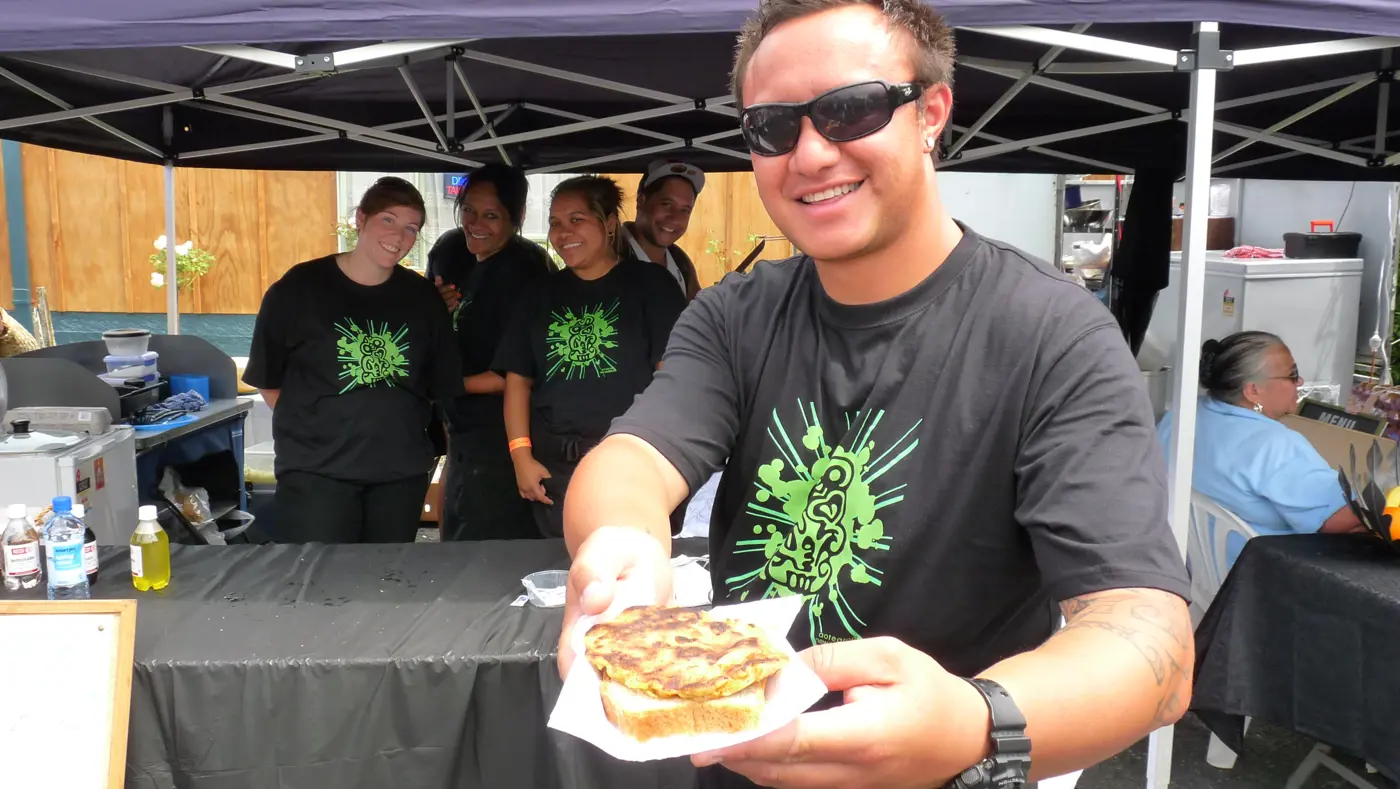

Hamilton: 78 kms, 1.1 hour
Auckland: 200 kms, 2.5 hours
Waitomo: 35 kms, 1 hour
Those in the know, however, head there for some of the best beach time, not just for the sunshine and swimming in the summer months, but throughout the year as there is much to explore in the area including walking trails.

Kawhia’s Ocean Beach is the best place to be when the tide is a either low or two hours each side of low tide. You can dig yourself a hole in the sand and soak in the hot spring water that bubbles to the surface.
There is abundant fishing, both in the large sheltered Kawhia Harbour, as well as surfcasting and further out in the ocean with local charter boats ready to take you to the best fishing spots – think snapper, kahawai, terakihi, gurnard, kingfish.
In and around Kawhia Harbour and its sister harbour, Aotea, to the north of the town there’s also plenty of flounder as well as shellfish including mussels, pipi, oysters and cockles.
Divers will find crayfish too, in particular in the waters around Kārewa/Gannet Island, a birdlife sanctuary 20 kms off the coast that is one of New Zealand’s largest breeding colonies of gannets.
Visitors will find affordable accommodation options, including camping, and plenty to eat – often featuring locally caught fish and home-grown produce. For fish and chips said to be the best head to Kawhia Fish Shop and if a good pie is what tickles your tastebuds call in at Oparau Roadhouse.
Each year in February the locals celebrate food and Māori culture and arts in the Move Your Tinana Kawhia Festival.

Kawhia is steeped in history, both Māori history, particularly that of the local Tainui people, as well as European.
In 1350AD, the ancestral Tainui waka (canoe) arrived in Kawhia Harbour with the people settling around the area, finding an abundance of natural food sources and discovering that the kūmara (sweet potato) and hue (gourd) that they had brought with them grew well in the rich soils.
To ensure their culture and traditions were passed onto the next generations in the new homeland a whare wananga, a school of learning, was also established.
Every year many Tainui people visit to pay their respects as they consider this corner of Waikato their spiritual home.
The ancestral waka is buried at Maketu Marae to the south of the town where the sacred Tangi te Korowhiti, said to be the final landing place, is marked by a grove of pōhutukawa trees.
By the late 1800s dairy products, flax and timber from the Waikato hinterland were being shipped out of Kawhia Harbour and in the early 1900s there was the intention to develop it into a major port, however, World War I arrived, and plans were subsequently scuppered.
The history of the area is on display at the local museum which is housed in the waterfront offices of the former Kawhia County Council. Here visitors can see Jurassic period fossils from the area, along with carvings of Tainui origin, old photographs and a whaleboat constructed in the early 1880s out of local kauri.
